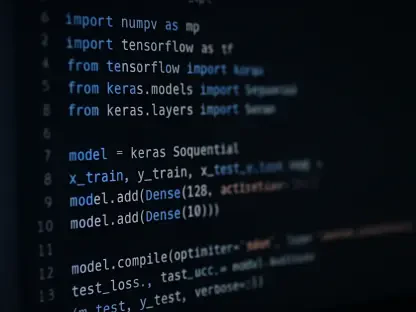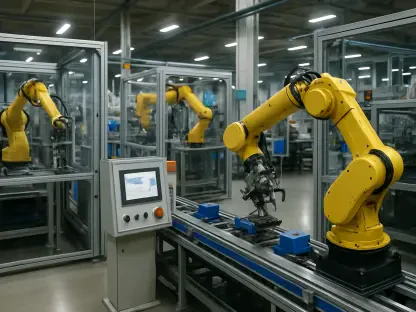Imagine a sprawling enterprise where autonomous AI agents seamlessly manage inventory, detect fraud, and personalize customer interactions in real time, without human intervention. This vision of efficiency is no longer a distant dream but a tangible reality being shaped by agentic AI protocols. These innovative frameworks, specifically Model Context Protocol (MCP) and Agent2Agent (A2A), are redefining how enterprises integrate and coordinate AI-driven processes. As businesses increasingly adopt distributed, autonomous systems, understanding the capabilities and limitations of these protocols becomes paramount. This review delves into the technical intricacies of MCP and A2A, evaluates their performance in enterprise settings, and explores their potential to transform modern architecture.
Core Features and Technical Design
Agentic AI marks a significant departure from traditional single-prompt AI models by enabling autonomous agents to perceive, reason, and act within complex environments. At the heart of this paradigm shift are MCP and A2A, two protocols designed to standardize interactions in enterprise systems. MCP serves as a foundational mechanism for agent-to-system integration, often likened to a universal connector for data access. Its open design has facilitated early adoption by numerous organizations, ensuring that agents can interact with disparate systems efficiently. Meanwhile, A2A focuses on agent-to-agent coordination, aiming to support intricate workflows through autonomous communication. Together, these protocols lay the groundwork for scalable AI solutions.
Diving deeper into MCP, its strength lies in a practical, accessible structure that simplifies data exchange between agents and enterprise systems. This protocol acts as a bridge, allowing seamless access to critical information without the need for custom integrations. Its widespread acceptance stems from a commitment to openness, enabling companies to implement it without proprietary constraints. However, MCP’s stateless nature means interactions are transient, lacking mechanisms for persistent memory or historical tracking, which can limit its utility in dynamic scenarios requiring context over time.
A2A, by contrast, is more ambitious in scope, targeting the complex challenge of enabling agents to collaborate independently. Still in a relatively early stage of development, this protocol aspires to orchestrate multi-agent workflows where decisions are made collectively and in real time. While its potential to revolutionize enterprise operations is evident, the immaturity of A2A means that practical implementations are limited, often grappling with issues of reliability and coordination. The technical aspirations of A2A highlight a critical need for further refinement to meet the demands of production environments.
Performance in Real-World Applications
The application of agentic AI protocols across industries reveals both promise and challenges. In e-commerce, for instance, MCP has been instrumental in deploying agents for inventory management, ensuring real-time updates to stock levels across platforms. Similarly, customer service agents leveraging MCP can access unified data to provide tailored responses, enhancing user satisfaction. These implementations demonstrate how standardized data access can streamline operations, reducing latency and improving decision-making in fast-paced sectors.
A2A’s potential shines in scenarios requiring coordinated efforts, such as fraud detection in financial systems. Here, multiple agents must share insights instantly to identify suspicious patterns and act collectively. Though early deployments show encouraging results, the lack of mature infrastructure often hampers consistent performance. Case studies indicate that while A2A can facilitate basic interactions, scaling these to handle intricate, multi-step processes remains a hurdle, underscoring the protocol’s developmental stage.
Beyond specific industries, the broader impact of these protocols is seen in their ability to transform enterprise workflows. From logistics optimization to predictive maintenance in manufacturing, agentic AI offers a glimpse into a future where autonomous systems drive efficiency. However, the stateless design of both MCP and A2A frequently results in lost context, forcing organizations to rely on external solutions for record-keeping. This gap between theoretical capability and practical execution remains a defining challenge in real-world settings.
Challenges and Limitations
Despite their innovative design, MCP and A2A face significant obstacles in enterprise adoption. The most prominent issue is their stateless architecture, which lacks durable memory or audit trails essential for production environments. Without a mechanism to retain context, agents must start anew with each interaction, undermining efficiency in workflows that depend on historical data. This limitation is particularly acute in sectors like finance or compliance, where traceability and accountability are non-negotiable.
Implementation challenges further complicate the deployment of these protocols. Many organizations adopt a protocol-first approach, prioritizing integration over foundational data infrastructure, which often leads to fragmented systems unable to support coordinated agent activity. Additionally, overly ambitious projects aiming to build comprehensive platforms from the outset frequently stall due to high costs and delayed outcomes. These pitfalls highlight the importance of strategic planning and incremental progress in adopting agentic AI solutions.
Efforts to address these limitations are underway, with a focus on supporting infrastructure to complement MCP and A2A. Technologies like event-driven systems, exemplified by Apache Kafka, are gaining traction for their ability to provide a shared memory space through event logs. Such solutions enable agents to react to changes, log decisions, and maintain context over time. While these developments are promising, they also underscore that the success of agentic AI hinges on robust data architecture as much as on the protocols themselves.
Adoption Trends and Industry Impact
Current trends in agentic AI adoption reveal a landscape of experimentation and varying maturity levels among enterprises. Many organizations are in the discovery phase, testing basic integrations of MCP to connect AI agents with existing systems. Others are beginning to explore A2A for limited agent-to-agent communication, often in controlled pilot projects. This gradual approach reflects a growing recognition that while agentic AI holds transformative potential, its full realization requires overcoming significant technical barriers.
The industry impact of these protocols is becoming evident as more companies recognize the shift toward autonomous systems as a cornerstone of future enterprise architecture. Drawing parallels to the transition from monolithic applications to microservices, the adoption of agentic AI mirrors past technological revolutions that required rethinking data and system design. Lessons from that era, such as the importance of decoupling and state management, are informing strategies to ensure scalability and reliability in AI-driven environments.
A key trend is the emphasis on data readiness over model sophistication. High-quality, real-time contextual data is proving more critical than the choice of AI model, whether proprietary or open-source. Enterprises are increasingly investing in infrastructure to ensure data is accessible and trustworthy, recognizing that poor data quality can undermine even the most advanced agents. This focus on foundational systems signals a pragmatic shift in how businesses approach the integration of agentic AI protocols.
Final Thoughts and Next Steps
Reflecting on this evaluation, it is clear that MCP and A2A have laid a critical foundation for agentic AI, offering standardized methods for system integration and agent coordination. Their early implementations across industries have shown remarkable potential to streamline operations and enhance decision-making. Yet, the stateless design of these protocols has consistently emerged as a barrier, limiting their effectiveness in complex, production-ready environments.
Looking ahead, enterprises should prioritize building robust data infrastructure as a primary step, leveraging event-driven technologies like Apache Kafka to address context retention and state management. Incremental adoption, focusing on specific use cases before scaling, offers a practical path to mitigate risks and costs. Additionally, collaboration across industry stakeholders to refine A2A’s capabilities could accelerate its maturity, ensuring it meets the demands of multi-agent workflows. By investing in these areas, businesses can position themselves to harness the full power of agentic AI, transforming enterprise architecture for sustained innovation.









